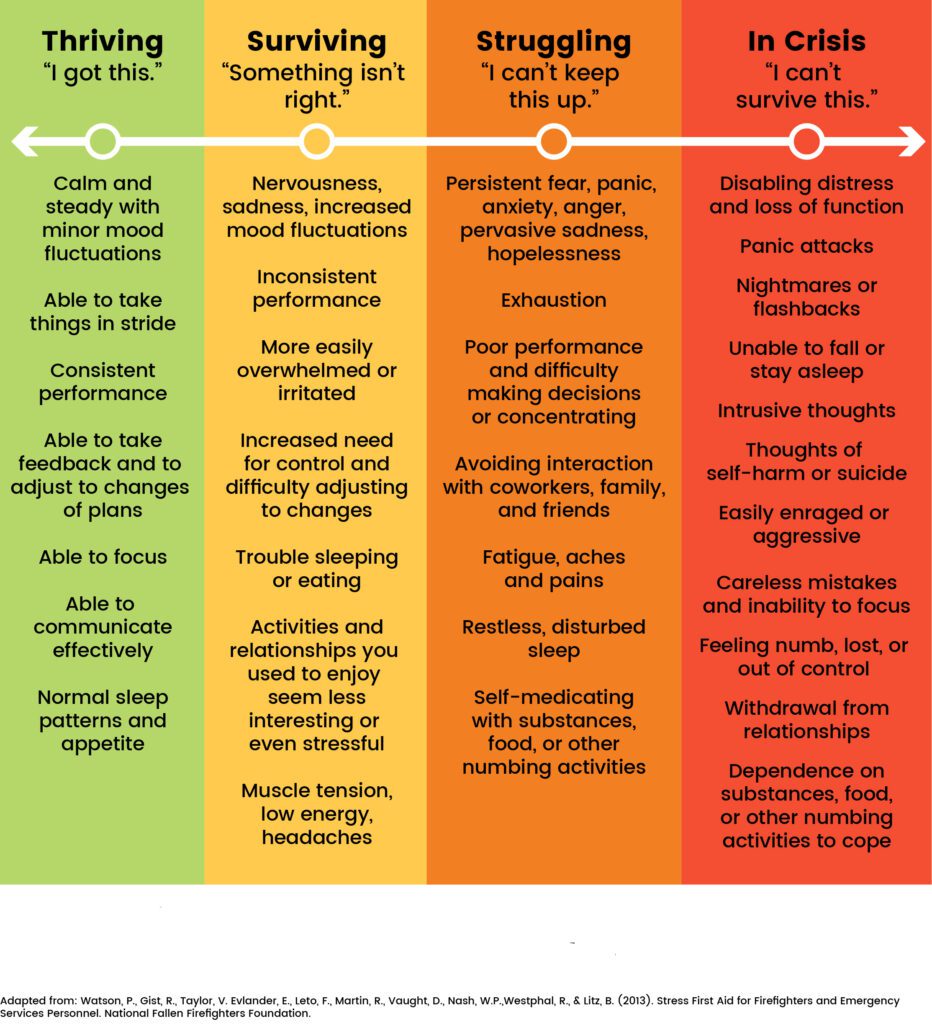Stress is a common experience for most individuals, however this is even truer for First Responders. While stress is a natural response to pressure, it can also be a significant source of anxiety and discomfort. Understanding the stress continuum can help first responders recognize the various stages of stress and identify ways to manage and reduce it. In this blog post, we’ll explore the stress continuum, its stages, and how first responders can manage stress effectively.
The stress continuum is a model that categorizes an individual’s stress response into four stages: green, yellow, orange, and red. Each stage represents a different level of stress, and understanding these stages can help individuals recognize when they are experiencing stress and identify the necessary steps to manage it.

Stress Continuum Stages
The first stage of the stress continuum is green. This stage is characterized by low stress levels, where individuals feel calm, relaxed, and in control of their lives. In the green stage, individuals have effective coping mechanisms, feel productive and focused, and have a positive outlook on life.
The second stage of the stress continuum is yellow. In this stage, individuals are experiencing mild stress, such as feeling anxious or irritable. They may be experiencing some physical symptoms of stress, such as headaches, muscle tension, or difficulty sleeping. In the yellow stage, individuals may also experience a decreased ability to focus or complete tasks.
The third stage of the stress continuum is orange. In this stage, individuals are experiencing moderate stress, which is affecting their daily lives. They may be experiencing more significant physical symptoms, such as stomach issues, increased heart rate, or sweating. In the orange stage, individuals may also experience a decrease in their ability to function effectively and may find themselves feeling overwhelmed or unproductive.
The fourth and final stage of the stress continuum is red. In this stage, individuals are experiencing severe stress, which is significantly affecting their lives. They may be experiencing severe physical symptoms, such as chest pains or panic attacks, and may have trouble functioning in their daily lives. In the red stage, individuals may require professional help to manage their stress effectively.
Manage Stress Effectively
Managing stress is critical for maintaining good physical and mental health. Here are some steps you can take to manage stress effectively:
- Practice good self-care: Engage in activities that help you feel relaxed and reduce your stress levels. This includes getting enough sleep, eating a healthy diet, and exercising regularly.
- Manage your workload: Identify your priorities and organize your tasks, so you can manage your workload effectively. This can help you feel more in control and reduce your stress levels.
- Seek support: Reach out to friends, family, or colleagues for support when you need it. Talking to others about your stressors can help you manage your stress levels effectively.
- Practice relaxation techniques: Meditation, deep breathing, or other relaxation techniques can help you manage your stress levels effectively.
By recognizing the stages of the stress continuum, first responders can identify when they are experiencing stress and take the necessary steps to manage it effectively. Remember to practice good self-care, manage your workload, seek support, and practice relaxation techniques to manage stress effectively.
Ready to learn how PeerConnect can support First Responders in your organization?! Book a demo today!
